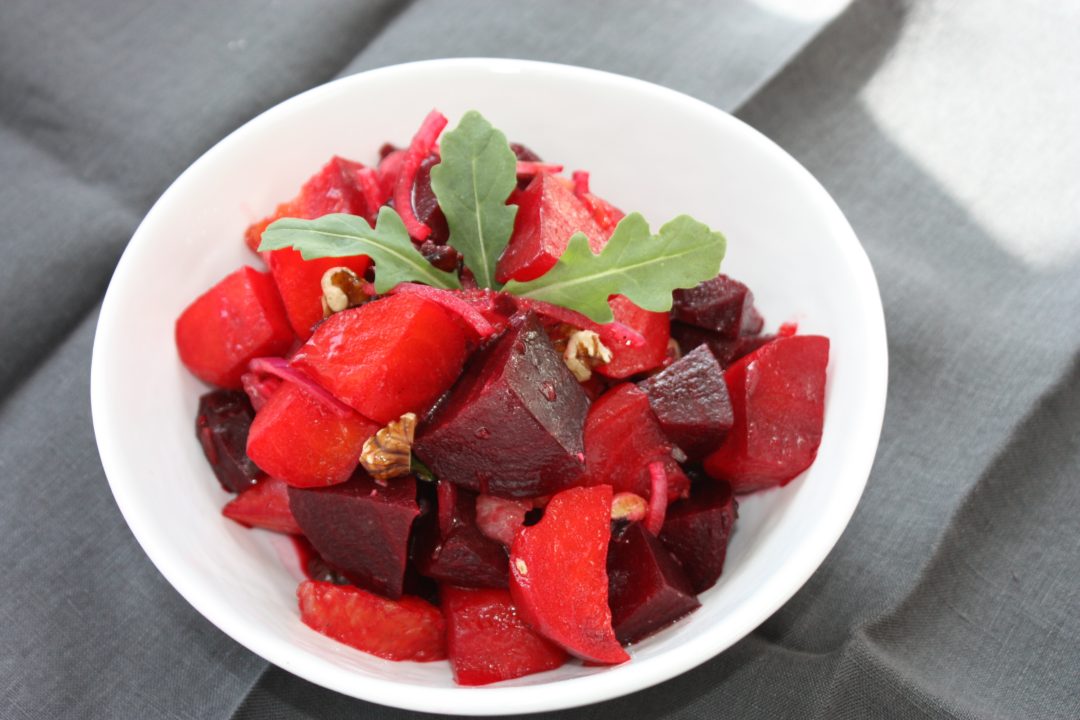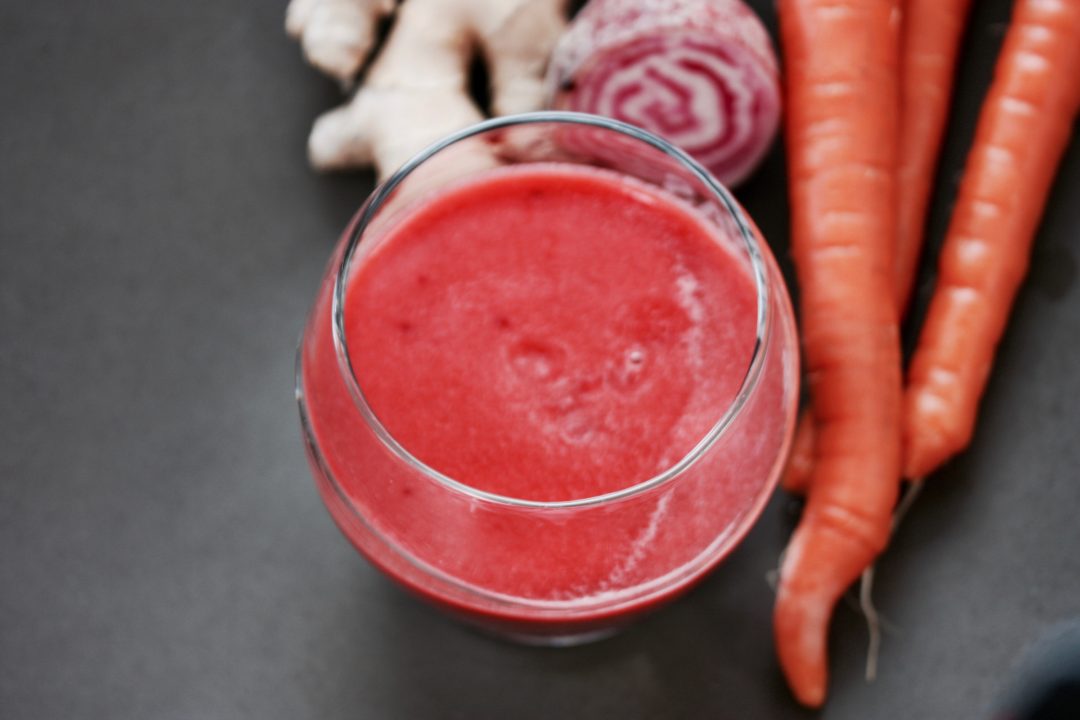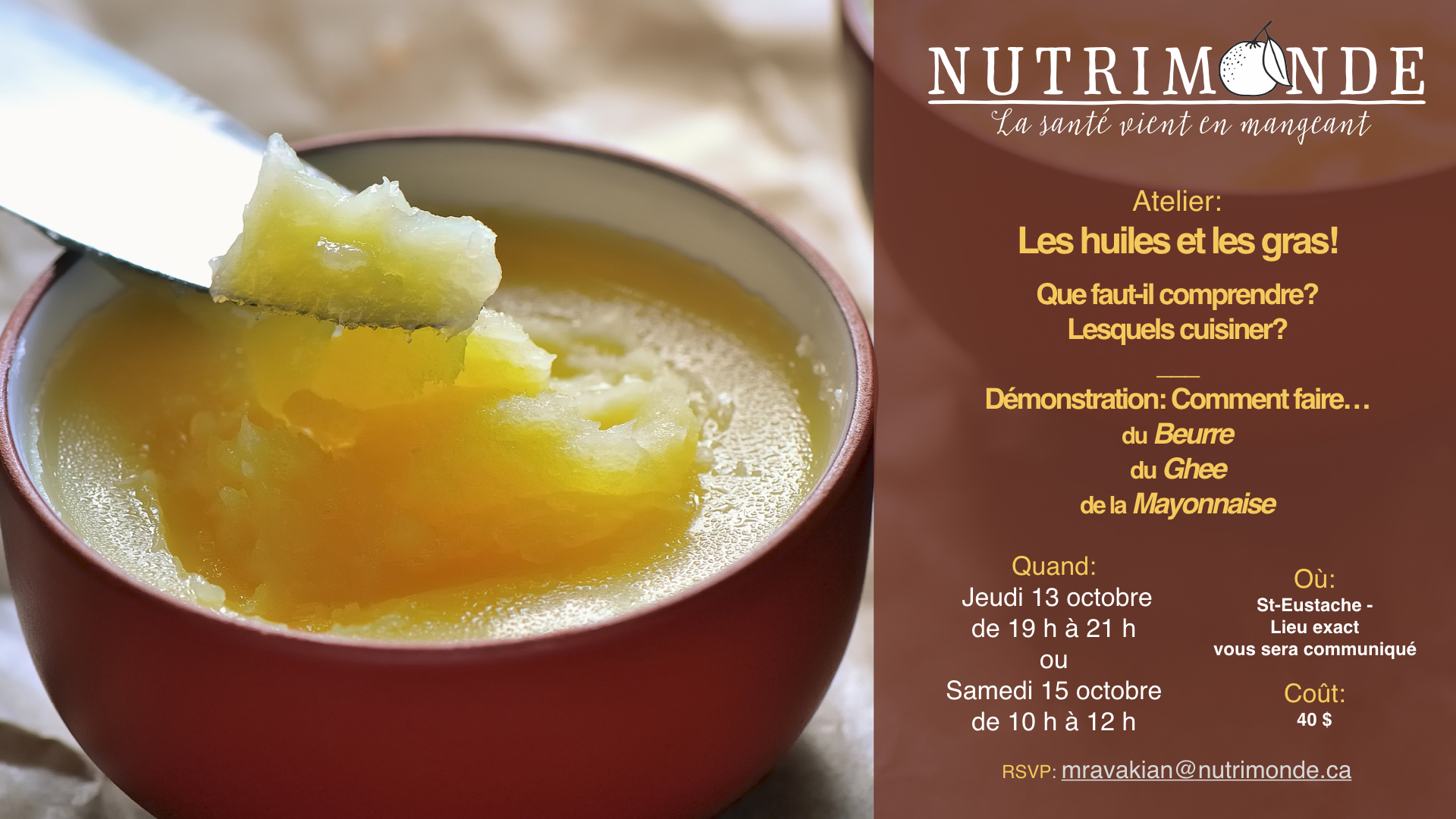Grated, roasted, raw or cooked, beets are one of the most recommended vegetables to eat because of their antioxidant properties and their high concentration of minerals, vitamins and fiber. Economic, tasty, nutritious and energetic, they are easy to find in all seasons and easy to prepare.
Personally, beet is one of my favorite vegetables. It is hard form me to not buy them when they are beautifully layed on market shells, specially in fall, when they are in season.
What do we find in beets?

What do beets cook up in our body?
1. It lowers blood pressure. In a beet juice, the nitrate turns into nitric oxide in the body which relaxes the vessels and improves blood flow. In one study, patients who consumed 120 ml of beet juice saw their blood pressure decrease by 4-5 points.
2. It fights inflammation courtesy of the betaine present especially in the skin of the beets. They also help protect the cells of the body against environmental stress.
3. It is antioxidant thanks to the pigment that gives it its famous scarlet color. As it contains vitamin C, it strengthens the immune system and protects the body against free radicals. Some studies have shown that betaine can help fight cancer.
4. It detoxifies the body, especially the blood and the liver, and strengthens the immune system. A true blood tonic!
How to eat beets?
A little imagination and all cooking methods are possible with beets. You can throw them in a salad, smoothie, juice, soup, add it to hummus…
| Raw, grated, cutinto sticks. | Best way to preserve its benefits. | Smoothie, salad, juice. | Goes well with apples, oranges. |
| Steamed | Best cooking method. Phytonutrients are altered less than other heating methods. | Cook as quickly as possible. Stop cooking when they are al dente. | To be enjoyed warm or cold. |
| Boiled | Nutritional values are altered | Easiest way to cook. | Better not to salt the water. |
| Oven roasted
400 F (200 C) |
No more than 60 minutes in the oven in order to not keep its nutrients. | A true delight. Taste and fragrance get concentrated. | Oil only after cooking. |
Source of vitamin K, beet leaves are edible and delicious. You can use them as spinach, preferably steamed. Drizzle afterwards with a bit of oil and some garlic.
Good to know
- Several studies suggest consuming beet in moderation because its sugar content. Other studies have shown however that its glycemic load is low. According to Thierry Souccar, 50 g of cooked beets have a Glycemic Index of 64 and a glycemic load of 2.2!
To learn more about the glycemic load, click here. - If your urine is coloured after eating beets, not to worry.
Note: As the beetroot is rich in oxalic acid, it is recommended to avoid it if you have kidney failure.
Here are two recipes that will have an effect!
- 6 beets (medium size), washed and brushed (if the leaves are fresh, remove and reserve them)
- 1 small red onion, thinly sliced
- 2 supremes of orange
- 1 handful walnuts (optional)
- Orange zest
- ⅓ cup red wine vinegar
- ¼ T olive oil
- Preheat the oven to 400 F (180 C).
- Wrap beets in parchment paper and cook in the oven, about 50 minutes.
- Once listless, Peel and cut beets, diced or sliced (to your taste).
- Add the remaining ingredients.
- Salt and pepper to taste.
- 1 beet, washed and stems
- 1 Apple
- 1 carrot
- 1 celery stalk
- 1 lemon, peeled
- 1 piece of ginger
References:
The world’s healthiest foods.org – http://www.whfoods.com/genpage.php?tname=foodspice&dbid=49
Mercola.com – http://articles.mercola.com/sites/articles/archive/2014/01/25/beets-health-benefits.aspx
http://www.monalimentation.org
http://www.thierrysouccar.com
https://Pro.anses.fr/tableciqual/index.htm











No Comments